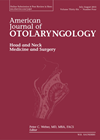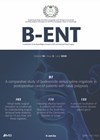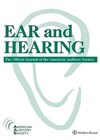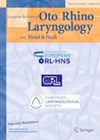
Journal Reviews archive for March 2023
A new hope for post-COVID olfactory loss?
Does anyone remember COVID? It seems that what happened between 2019 and 2021 is all but forgotten about. Aside from it cropping up on news feeds occasionally and a few out-of-date automated phone messages that start off with ‘During the...
Is a hemithyroidectomy as effective as a total thyroidectomy for compressive symptoms?
The claim made in the title of this paper, that hemithyroidectomy is equally as successful as total thyroidectomy in alleviating compressive symptoms from goitres, is certainly intriguing. And with the inclusion of 45,539 subjects, it would at first glance seem...
A new idea for olfactory recovery, but not the evidence to support it
Smell training for olfactory loss of all types is a well-recognised treatment, and the typical regimen of rose, clove, lemon and eucalyptus is frequently used. This study looks to compare using eight essences rather than four to see if this...
Antioxidants for bacterial rhinosinusitis
This Turkish laboratory animal-based study looked at the effects of alpha-lipoic acid on inflammation, oxidative status, and tissue integrity in an animal model of experimentally induced acute rhinosinusitis and to compare these effects with antibiotic treatment using cephalosporins. Alpha-lipoic acid...
Going online with dysphagia practice: potential for innovation post pandemic
Telepractice is perhaps the most widespread service innovation to have received such rapid uptake across health systems globally. Disciplines that started to adopt telehealth prior to the pandemic found themselves at the forefront of a seismic shift to delivering healthcare...
What are the risk factors for new onset tinnitus?
Factors associated with tinnitus have mainly been studied cross-sectionally. Tinnitus is associated with hearing loss, noise exposure, ototoxic medication, head and neck trauma, smoking and depression and anxiety. Only a few studies exist that report on risk factors for developing...
Cochlear implantation in enlarged vestibular aqueduct patients
In this systematic review, the authors describe the complications and outcomes of cochlear implantation in patients with enlarged vestibular aqueduct (EVA). The authors reviewed five major databases and included 4035 patients from 34 studies. Of these, 853 patients (21.14%) had...
Age and sleep disorders as risk factors for Ménière’s disease
Decades after it was first described, the pathophysiology of Ménière’s disease is still a subject for research and discussion, with several controversies regarding its management. Several factors have been reported to cause Ménière’s disease including viral infections, allergies, genetic factors,...
An understandable backup
This small study comparing the auditory temporal processing of seven younger adults with that of seven older adults does not show anything breathtakingly new in its conclusions. After the assessment to rule out compounding factors such as middle ear pathology,...
Third-party disability in cochlear implantation
The authors of this study note significant third-party disability experienced by significant others (SO) or communication partners of persons with hearing impairment (PHI). The study explored contextual and psychosocial factors for successful auditory rehabilitation, advocating for the importance of including...
Malignant transformation of leukoplakia in previous cancer patients
This is a retrospective study from Taiwan assessing risk factors in developing oral squamous cell carcinoma from surgically excised oral leukoplakia in patients with a previous oral cancer, the underlying thought being that patients with an oral carcinoma have a...
Relapse after bi-maxillary surgery in a class III malocclusion
This study analysed 90 patients who underwent a bi-maxillary osteotomy for a class III malocclusion. There were 30 in each of three groups of patients based upon the Frankfort mandibular plane angle (FMA). They were divided into: greater than 32°,...
















